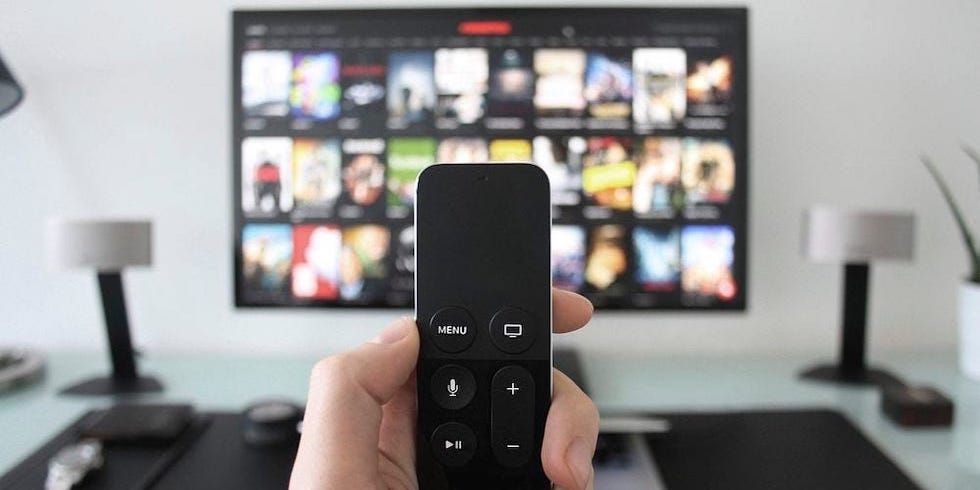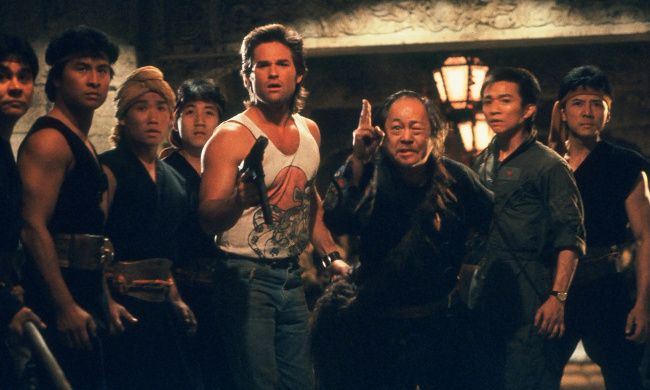
The streaming wars, once characterized by fierce competition and a race for subscriber dominance, are conclusively shifting towards an era defined by collaboration, consolidation, and the strategic pursuit of profitability. For years, industry observers predicted the emergence of one or two clear victors, such as Netflix or Disney, who would ultimately control the vast digital entertainment landscape. However, as 2025 unfolds, this anticipated outcome has proven elusive, giving way to a more intricate and, arguably, more sophisticated “bundle economy” that is fundamentally reshaping the rules of the subscription market.
This transformation represents a profound departure from the subscription-centric models of the past, where platforms like Paramount+ were expected to compete head-to-head with rivals solely on the strength of their individual content offerings. Instead, we are now witnessing a market where former adversaries are not only “cosying up” but actively integrating their services within shared ecosystems. This paradigm shift, marked by unprecedented strategic alliances and a re-evaluation of business models, signals an endgame in the initial phase of the streaming wars, setting the stage for a future where success is increasingly contingent on strategic partnerships rather than isolated competition.
The implications of this shift are far-reaching, touching upon every facet of the entertainment industry, from content creation and distribution to consumer behavior and monetization strategies. Hollywood, in particular, is undergoing a profound realignment, grappling with the realities of a post-streaming-wars market that demands innovation, efficiency, and a keen understanding of the evolving consumer landscape. This article will delve into the critical factors driving this new era, highlighting the intricate strategies and market forces that are defining the future of digital entertainment.

1. **The Fundamental Shift to a “Bundle Economy”**The narrative surrounding the streaming industry has fundamentally pivoted from an intense, winner-take-all “streaming wars” mentality to the burgeoning reality of a “bundle economy.” What was once perceived as a battle for individual subscriber loyalty, where services competed in isolation based on exclusive content, has evolved into a landscape where collaboration and aggregated offerings are paramount. This transformation signifies a crucial “turning point” in 2025 for the entire subscription economy, transcending streaming to influence how consumers access and manage a wide array of digital services.
This evolution is driven by the recognition that an overabundance of standalone subscriptions has led to consumer fatigue and churn. Rather than each service battling for a piece of the pie independently, the new model emphasizes combining multiple services into more attractive, value-driven packages. This not only eases the burden of managing numerous individual subscriptions for consumers but also creates “more sophisticated (and potentially more lucrative)” revenue streams for providers by increasing overall stickiness and reducing subscriber defections.
The shift directly addresses the unsustainable pricing and massive losses that characterized the early days of streaming, where companies “subsidized their growth with unsustainable pricing, amassing huge losses to gain market share.” As the industry now “chases profits over subscriber growth,” bundling emerges as a pragmatic solution to achieve financial viability while still delivering perceived value to the end-user. It signifies a mature phase where the industry is moving past pure market share grabs towards sustainable, collaborative growth models.

2. **Strategic Integrations and Collaborations Among Streaming Rivals**A striking characteristic of this nascent bundle economy is the willingness of erstwhile direct competitors to integrate their services within shared platforms, a practice once considered counterintuitive. The most illustrative example is Paramount+, which, rather than solely competing with Amazon Prime Video, is now “packaged within Amazon Prime, sitting neatly inside the ecosystem of a direct competitor.” This strategic move allows Paramount+ to tap into Amazon’s vast existing subscriber base indirectly, bypassing the challenges and costs of direct customer acquisition.
The complexity of these integrations is further highlighted by the inclusion of Apple TV+ within the Prime ecosystem, meaning “three major streaming rivals are now reaching the same (if indirect) audience through a shared platform.” Such arrangements underscore a pragmatic understanding that aggregating content on widely adopted platforms can significantly expand reach and enhance customer convenience. These collaborations, while challenging to execute, are becoming “increasingly common” as companies seek to maximize their audience footprint without the prohibitive costs of independent expansion.
However, the path to successful large-scale bundling is not without its hurdles. The context points to ventures like Venu Sports, announced in February 2024, which “was wound up in January 2025 after facing a lengthy antitrust battle.” This example vividly illustrates the “time-consuming and complex” nature of such endeavors and the significant “work and resources were wasted” when execution fails or regulatory challenges arise. Despite these risks, the potential for “new revenue streams, expanded audience reach, and enhanced customer experience” continues to drive major players towards these intricate collaborative strategies, signaling a clear shift away from isolationist competition.

3. **The Rise of Indirect Subscription Channels and Third-Party Hubs**The consumer landscape is undergoing a significant transformation, with a growing number of subscribers opting for “indirect channels” for their streaming services. Research indicates that “one in five subscribers now choose to go via indirect channels,” a trend observed across 24 other surveyed markets. This isn’t merely a preference but a strategic choice by consumers who are “savvier than ever with how they manage their subscriptions to maximize value,” frequently pausing or canceling direct subscriptions only to re-subscribe through bundle deals offering “better savings and convenience.”
This behavior, while potentially appearing as “a wave of cancellations” on the surface, is in reality “simply a shift from direct to indirect business models.” It highlights a critical evolution in how content providers must approach distribution. The power dynamic is shifting, as consumers gravitate towards integrated solutions that simplify management and offer financial benefits. This trend is expected to “surely accelerate as bundles become more accessible and widespread,” creating a new imperative for subscription services to adapt their go-to-market strategies.
Furthermore, 2024 saw “a new wave of smaller-scale bundling through third-party content hubs” that made the benefits of bundling “more accessible than ever.” These hubs offer a “win-win” scenario: consumers enjoy “discounts and easier subscription management,” while providers gain “new customers without the burden of legal battles or contract negotiations.” This mechanism allows even “niche players” like Crunchyroll (Japanese anime) or Shudder (horror-focused) to “unlock a far larger audience than they could ever reach through direct sign-ups alone,” demonstrating the power of aggregation for services of all sizes.

4. **Telcos and Financial Institutions as New Bundle Providers**Beyond the traditional media companies, a powerful new cohort of bundle providers is emerging, fundamentally altering the distribution landscape: telecommunications companies (telcos) and financial institutions. Telcos, leveraging their “most valuable real estate in the bundling market” – their existing infrastructure and direct customer relationships – are strategically positioning themselves as central hubs for subscription services. The context reveals that “88% of telco leaders have plans to launch a subscription hub,” with platforms like “Verizon +play already proving a popular source for indirect subscriptions.” This move allows telcos to enhance their core service offerings, reduce churn, and create additional revenue streams by acting as aggregators.
Not to be outdone, banks and financial institutions are rapidly catching up, recognizing the immense opportunity that bundling presents. Services such as “Mastercard’s Smart Subscriptions are already integrating subscription management into banking apps,” thereby making it “easier than ever for consumers to manage their services in one place.” This integration positions financial institutions “as an even more central part of consumers’ daily lives,” transforming them from mere transaction processors to essential facilitators of digital consumption.
For these institutions, embracing such technology opens up an “enormous” opportunity for “customer acquisition and retention.” By offering seamless subscription management and bundling options, they can deepen customer relationships and become integral players in shaping the nascent “Bundle Economy.” This expansion of the bundling ecosystem beyond traditional content providers signifies a broader strategic shift, where any entity with a significant customer base and robust technological infrastructure can become a key player in the distribution of digital services.

5. **Hollywood’s Summer of Reorganization and Profit-Driven Adjustments**Hollywood, a perennial nexus of entertainment and commerce, has experienced a “summer of turmoil and reorganization” as it navigates the aftermath of the streaming wars and the industry’s historical double-strikes. The foundational business model, once centered on a streaming-led approach, is now undergoing a radical realignment to meet the “post-streaming-wars market reality.” Legacy media giants, including Disney and Warner Bros. Discovery, are aggressively “chase[ing] profits by slashing jobs and content costs,” employing a range of strategies from “cracking down on password sharing to price hikes to push up the ARPU (average revenue per user).” This stark shift reflects a sobering recognition that the era of unsustainable growth subsidized by massive losses is definitively over, replaced by a relentless focus on financial viability and shareholder value.
A particularly poignant example of this profound shift is Paramount’s ongoing transformation. The context clearly states that “Paramount’s №1 problem was never the technology, which was fine,” but rather “The key issue, which it shares with most of its non-Netflix competitors, was the limited scale of its distribution hindering it from efficiently monetizing their content.” This critical insight, coupled with its “pending merger with Skydance,” is catalyzing a redefinition of Paramount as “a media and tech company,” with a strong emphasis on developing advanced algorithmic engines and ad tech capabilities. This strategic pivot underscores a broader industry understanding that “to be an an entertainment company in 2024 is to be a tech company,” necessitating sophisticated backend tech stacks, robust data analytics, and the arduous task of attracting top engineering talent in a competitive landscape.
The underlying profitability issue of the standalone streaming model, which “is just not as profitable as the cable bundles,” continues to plague Hollywood, casting a long shadow over its legacy players. Wall Street’s clear apprehension is vividly reflected in the plunging share prices of major players like Warner Bros. Discovery and Paramount Global, signaling investor impatience with models that prioritize subscriber numbers over sustainable profits. This financial pressure is a constant driver for the internal reorganizations and cost-cutting measures that define this era, as companies strive to align their expenditures with market realities.
Despite these significant financial headwinds, consumers are “certainly not turning back” to linear television. The trend of “cord-cutting accelerates,” and streaming’s share of viewing time continues its inexorable rise, having “first overtook cable in Nielsen’s tracking back in 2022 and has continued to grow its share of TV time.” For instance, streaming services accounted for “over 40% of daily TV viewing in June,” significantly outpacing cable TV at 27.2% and broadcast TV at 20.5% for the same month. This undeniable consumer preference for streaming, for better or worse, means “Hollywood is stuck with a streaming-led distribution model.” The industry’s most productive path forward, therefore, involves fundamentally “tweak[ing] the business model to fit this new market reality,” necessitating a comprehensive strategy that looks “both outward and inward to find its future” in a complex, evolving landscape defined by financial prudence and strategic adaptation.

6. **The Return of Ad-Supported Tiers and Diverse Revenue Streams**In a significant strategic reversal, Hollywood is actively “looking to revive in the streaming era” the ad-supported viewing experience, recognizing that “TV has always been an ad-driven business.” This pivot is a direct response to both the “constant subscription price hikes” that have created “pain points for some price-sensitive users” and the eagerness of “brand advertisers… to follow the audience to streaming.” Consumers are increasingly choosing to “either downgrade their services to ad-supported tiers, or more commonly, opt to supplement their existing roster of paid streaming services with free, ad-supported services.” This trend is exemplified by Fox-owned AVOD service Tubi, which is “now more popular than Disney+ in the US” in terms of daily viewers, averaging “about 1 million daily viewers in May,” as cited by the LA Times via Nielsen data.
The industry is navigating a delicate balance between maximizing ad sales and preserving user experience, a challenge particularly acute for Netflix. Despite being “the biggest streaming service in the world,” Netflix “barely cracks the top 10 in terms of ad sales,” indicating significant untapped potential. Various strategies are being deployed across the competitive landscape: Disney, for instance, has “raised prices for its basic plan and introduced an ad-supported tier,” offering subscribers flexibility while maintaining revenue streams. In contrast, Netflix has been “more cautious, gradually integrating ads and lagging behind in advanced ad capabilities,” highlighting differing approaches to this critical revenue opportunity.
Amazon took an “even blunter route,” deciding to “turn on ads for all Prime Video viewers and charging a premium to remove them.” As a direct consequence, a staggering “80% of Prime Video viewers are now watching with ads.” Furthermore, Amazon has strategically “charged advertisers lower rates, undercutting the competition and forcing its rivals to scramble,” a move that demonstrates aggressive market positioning to capture ad spend. These diverse tactics illustrate the industry’s collective effort to find the optimal monetization mix in a highly fragmented market, balancing user expectations with the imperative for financial growth.
This fascinating dynamic has led to an ironic twist where companies traditionally reliant on ads for their core revenues, such as YouTube, are now “selling subscriptions ranging from YouTube Premium to Sunday Ticket.” Conversely, companies that were once “all about subscribers,” like Netflix and HBO, are now “all-in on ads.” This convergence suggests that “everyone is trying both to maximize revenue streams,” recognizing that a hybrid model offers the most robust path to profitability and market resilience. Despite this aggressive embrace of advertising, the value of an “uninterrupted ad-free viewing experience” is still “appreciated” by consumers, with a Hub Entertainment Research survey finding that “consumers report more loyalty to ad-free streaming TV services.”
To enhance profitability further and capture “direct response budgets,” streamers are beginning to seriously explore the “untapped potential of interactive ad formats,” whose premium CPR (cost per response) “could help make up for the lost excess revenue in this transition from cable bundles to streaming.” Recent developments indicate a shift towards greater control over advertising ecosystems: Netflix announced in May that “it will launch its own in-house ad platform later this year,” aiming to end its partnership with Microsoft and gain “greater control over its advertising ecosystem, from targeting precision to data management.” Concurrently, Disney is “reportedly teaming up with Walmart for enhanced targeting and measurement solutions across its streaming properties.” This aggressive and innovative embrace of advertising is a fundamental and evolving characteristic of the industry’s new reality, indicating a sophisticated push towards more effective monetization.
Read more about: The Streaming Wars: How Hollywood’s Content Bubble Burst Led to a New Era of Sustainable Growth and Industry Resilience

7. **Hollywood Remaking the Traditional Cable Bundle Through New Alliances**Hollywood, in a significant strategic pivot, is not merely reacting to the evolving market but actively attempting to reconstruct the very cable bundle it once sought to dismantle. This proactive approach is manifesting through a series of innovative streaming alliances designed to offer greater value and combat subscriber churn. These bundles, often integrating services from formerly disparate media giants, represent a calculated effort to replicate the convenience and perceived value of traditional pay TV in a digital, on-demand format.
Leading this charge, Comcast has introduced its “StreamSaver” deal, a compelling package combining Peacock, Netflix, and Apple TV+ at a substantial discount. This strategic move is clearly aimed at attracting cord-cutters and providing existing customers with an enhanced, consolidated entertainment offering. Similarly, Verizon has revamped its “myHome” program, extending discounted streaming options to its internet subscribers, including Netflix and Disney+ for a nominal fee on top of their home internet plans. This program further bundles YouTube TV as a robust Live TV alternative, directly targeting those who have moved away from traditional Fios TV.
Not to be outdone by telecom companies, Disney and Warner Bros. Discovery have forged their own powerful alliance, offering a bundle that includes Disney+, Hulu, and HBO Max. This collaboration is particularly noteworthy as it merges extensive content libraries under a single offering, providing both ad-supported and ad-free options to cater to a broad spectrum of viewer preferences. Disney has already begun integrating Hulu content directly into Disney+ for subscribers of both services, simplifying access and enhancing the overall user experience within its ecosystem.
The critical role of live sports, long considered the bedrock holding the traditional pay TV bundle together, is also being strategically relocated to streaming destinations. Netflix, for instance, has secured a three-year deal with the NFL to stream two Christmas Day football games, marking a significant entry into premium live sports. Perhaps even more impactful is the upcoming Venu Sports, an ambitious joint venture between ESPN, Fox, and Warner. This sports super bundle plans to offer ESPN+ alongside streaming feeds from 14 major networks, targeting a fall 2024 launch, though it has already drawn antitrust scrutiny from regulators.
The success of these burgeoning bundles, however, hinges critically on their pricing. The cost must be meticulously calibrated to be attractive enough for cord-cutters, offering a clear value proposition compared to individual subscriptions, without simultaneously undercutting the profitability of the individual services involved. This delicate balancing act is a particular concern for ventures like Venu Sports, whose yet-to-be-revealed pricing will be a key determinant of its market acceptance and long-term viability. Hollywood’s renewed embrace of bundling underscores a significant shift in the industry’s strategy, aiming to curb subscription fatigue and bolster profitability in a highly competitive landscape.

8. **Escalating Competition from the Broader Attention Economy**As Hollywood meticulously realigns its business model to the harsh realities of the post-streaming-wars market, a critical realization is emerging: competition extends far beyond the traditional confines of tech-backed streamers. To truly thrive, the entertainment industry must broaden its gaze to encompass the entirety of the attention economy. This includes a diverse array of players such as YouTube, which is rapidly eroding traditional TV viewing time, alongside video games and game-streaming sites like Twitch, which effectively serve as live TV for younger generations, and the ubiquitous short-form video platforms such as TikTok and Instagram Reels.
YouTube stands as a formidable competitor in this expanded ecosystem, boasting a staggering valuation of $455 billion, which significantly surpasses Netflix’s market capitalization by more than 50%. Its dominance in digital video is undeniable, translating into substantial ad revenue growth, projected to reach $37 billion in 2024 and an impressive $42 billion in 2025. This influence extends beyond mere financial metrics; Nielsen reports that YouTube accounted for nearly 10% of all TV watch time in March 2024, signaling a profound shift in consumer viewing habits. Furthermore, YouTube’s extensive reach on mobile devices, coupled with its recent rollout of ‘Playables,’ a mobile gaming feature integrated into its app, solidifies its position as a multifaceted entertainment powerhouse.
Amazon-owned Twitch also exerts a powerful gravitational pull, particularly among younger demographics seeking live video content. While traditionally known for gaming-related livestreams, the platform recently demonstrated its broader entertainment appeal by setting a new record with 3.85 million concurrent viewers for a boxing event in Madrid featuring prominent gaming influencers and Will Smith. Twitch’s success vividly illustrates how game-streaming and interactive live content are actively reshaping entertainment preferences, offering a dynamic alternative to linear television for generations that prioritize real-time engagement and community interaction.
Looking further ahead, the accelerating rise of AI-driven platforms introduces another layer of complexity and opportunity for the entertainment industry. Emerging platforms such as Fable Studio’s “Showrunner” exemplify how artificial intelligence has the potential to fundamentally transform content creation, empowering users to generate and customize their own media. This transformative shift heralds a new era of personalized entertainment but simultaneously raises critical questions regarding the future role of AI in conventional media production. The industry must approach this technological revolution with a judicious blend of innovation and caution, recognizing both its potential and its implications for creative talent and intellectual property.
To effectively counter these burgeoning competitors and adapt to an ever-evolving consumer landscape, the entertainment industry is increasingly adopting a dual strategy of expanding both its offline and online footprints. Netflix serves as a prime example of this integrated approach, with plans to launch two “Netflix House” entertainment complexes in 2025. These physical locations are designed to transcend the digital realm, offering fans immersive experiences that blend dining, shopping, and tangible connections to their favorite shows and characters. Concurrently, Netflix’s collaboration with Roblox to create a digital theme park based on its intellectual property further underscores its commitment to integrating content into virtual worlds and interactive platforms, positioning itself at the forefront of diverse digital engagement.
Read more about: 15 Trucks Owners Wish They Never Bought: Unpacking the Crippling Costs and Regrets

9. **The Critical Issue of Platform Decay and User Experience**Across the spectrum of digital services, a troubling phenomenon known as “platform decay,” or “entification,” has become an increasingly alarming trend. This process, driven by an unyielding pursuit of profit, sees online platforms gradually decline from initially serving user needs to overtly prioritizing business interests at the expense of user satisfaction. While this concept has most prominently been applied to social media giants like Twitter or Facebook, its insidious effects are increasingly evident within streaming services, typically manifesting as escalating prices, dwindling content libraries, and an overall deterioration of service quality and perceived value.
Netflix, despite its undeniable success and substantial market share as the world’s largest streaming service, faces growing criticism for a perceived decline in content quality and a corresponding dip in user satisfaction. Critics contend that Netflix’s aggressive content cuts and its sharpened focus on cost control, often at the expense of creative excellence, have resulted in a less compelling user experience. This strategic shift, while potentially bolstering subscriber numbers and stock value in the short term, has inadvertently contributed to increased churn rates and a discernible shift in viewer loyalty, highlighting the precarious balance between financial objectives and consumer engagement.
To effectively counteract this pervasive trend of platform decay and cultivate enduring user loyalty, streaming services must fundamentally re-prioritize the enhancement of the user experience, rather than fixating solely on immediate financial gains. This imperative demands a concerted investment in developing more robust and intuitively user-friendly interfaces, thoughtfully expanding content libraries with quality and relevance, and judiciously avoiding the pitfalls of hasty, short-sighted cost-cutting measures that alienate audiences. The industry must recognize that fostering genuine engagement is ultimately the most potent strategy for securing consumer allegiance and sustained subscriptions.
Indeed, while the adage “content is king” remains largely true, the overall user experience holds significant sway in the contemporary streaming landscape. Different streaming services invariably present diverse user interfaces, each offering a distinct navigational and viewing experience. Streamers are actively experimenting with UI designs to optimize this crucial aspect. Disney, for example, is reportedly developing new features specifically engineered to boost viewer engagement, such as dynamic pop-up live channels and more precisely tailored content recommendations. Regardless of the specific tactics deployed, the overarching objective remains consistent: to mitigate customer defections and strategically generate increased revenue from advertising and subscriptions, solidifying the platform’s position in a fiercely competitive market.
The recent spate of show cancellations, exemplified by Amazon Prime Video’s decisions regarding ‘A League of Their Own’ and ‘The Peripheral,’ underscores the ruthlessness of Hollywood’s business landscape. While Amazon attributed these cancellations to the ongoing writers’ and actors’ strikes—a claim vehemently disputed by series cocreator Abbi Jacobson as “bull and cowardly”—the underlying message is clear: the halcyon days of streaming, characterized by Silicon Valley’s largesse and seemingly endless budgets for ambitious, moonshot projects, are rapidly fading. In their place, a heightened emphasis on return-on-investment and prudent financial management now dictates content strategy, signaling a more conservative era where creative risks are increasingly weighed against clear profitability metrics.
Read more about: Kris Kristofferson: A Profound Legacy of Song and Screen, Explored Through a Life Well-Lived

10. **The Lasting Impact of M&A Frenzy and Consolidation of Power**The recent streaming wars, although fought with the less visible weapons of M&A advisory services and strategic finance consulting, have undeniably left an indelible mark on Hollywood’s landscape, irrevocably redrawing the industry’s contours. Traditional media companies, compelled to rapidly adapt to the digital age, embarked on an acquisition frenzy, aggressively scooping up existing content libraries and streaming platforms. This period witnessed a significant consolidation of power, transforming a multitude of media players into a handful of mega-conglomerates. These new entities wield increased financial strength, possess broader intellectual property portfolios, and command expansive distribution networks, effectively towering over competitors with vast resources and global reach, though the transition remains ongoing.
According to Philip Alberstat, an experienced media producer and managing director at Embarc Advisors, the genesis of Hollywood’s M&A frenzy stemmed directly from the fundamental shift away from traditional cable TV to digital streaming platforms. This transformation fundamentally altered audience consumption habits, necessitating that traditional media companies adapt with unprecedented speed. Streaming platforms quickly recognized that exclusive, compelling content was the primary driver of subscriber growth, consequently spiking the demand for unique intellectual properties, talented creators, and robust production capabilities. The imperative to build a competitive streaming service, requiring substantial content libraries that would otherwise take decades to develop organically, propelled media conglomerates toward strategic mergers and acquisitions as a rapid scaling mechanism.
Landmark acquisitions during this period vividly illustrate the scale of this strategic realignment. Disney’s monumental acquisition of 21st Century Fox for $71.3 billion in 2019 stands out as a pivotal event, significantly bolstering Disney’s content library in anticipation of the Disney+ launch. Similarly, AT&T’s acquisition of Time Warner, subsequently rebranded as WarnerMedia, and its ensuing launch of HBO Max, further underscored the critical importance of acquiring a vast and diverse content portfolio. Alberstat emphasizes that Hollywood studios strategically deploy M&As to expand content libraries, enhance production capabilities, and improve technological infrastructure, along with acquiring exclusive rights to popular franchises, characters, and stories, leveraging these valuable IPs to create content that attracts dedicated viewer bases.
One of the most profound impacts of this M&A flurry is the widespread consolidation of market power among a select few major players. As large studios absorbed smaller production companies and other entertainment entities, they not only expanded their libraries but also effectively reduced the number of competitors in the market. Alberstat points out that this consolidation inevitably leads to fewer choices and potentially higher subscription prices for consumers. In the nascent stages of the streaming wars, services often subsidized growth with unsustainable pricing, incurring massive losses to gain market share; however, that era has concluded, replaced by a relentless pursuit of profits over subscriber growth.
This intensified competitive pressure has spurred streaming services to innovate relentlessly, continuously striving to improve user experience and invest heavily in original content as a means to attract and retain subscribers. Netflix’s aggressive investment in original productions, for instance, was a direct response to the escalating competition from new entrants like Apple TV+ and HBO Max, with the latter benefiting significantly from WarnerMedia’s extensive content library post-merger. Alberstat notes that with more resources at their disposal, studios are now investing in higher-quality production values and more diverse content offerings, acknowledging that subscribers now harbor heightened expectations for original, compelling, and culturally varied content. While consumers may not always appreciate the associated costs, the trend towards high-quality video content delivered via streaming apps is expected to persist, solidifying exclusivity as a crucial competitive differentiator.

11. **Enduring Profitability Challenges of the Standalone Streaming Model**Despite the significant shifts towards bundling and ad-supported models, the enduring profitability challenges inherent in the standalone streaming model continue to cast a long shadow over the entertainment industry. The core issue, as repeatedly highlighted by industry analysis, is that the standalone streaming model is fundamentally “just not as profitable as the cable bundles” it sought to replace. This critical financial reality underlies much of the strategic upheaval and cost-cutting measures currently gripping Hollywood, forcing a re-evaluation of previous growth-at-any-cost strategies.
Wall Street’s clear apprehension regarding this profitability gap is vividly reflected in the plunging share prices of major players such as Warner Bros. Discovery and Paramount Global. These significant declines signal investor impatience with business models that prioritize subscriber numbers over sustainable, robust profits. The financial market is unequivocally demanding a shift towards fiscal prudence, making profitability an existential imperative for legacy media companies navigating the complex transition to a streaming-centric future. The relentless financial pressure acts as a constant impetus for the internal reorganizations and aggressive cost-cutting initiatives that have come to define this challenging era, as companies strive to align their expenditures with harsh market realities.
Industry experts like Philip Alberstat predict that “Streamflation” will persist, characterized by continued price increases and a relentless crackdown on password sharing by streaming platforms. This is a direct response to the profit pressure, designed to extract more revenue from existing subscriber bases. Furthermore, platforms are expected to diversify their pricing structures more aggressively, introducing entry-level plans that include a greater volume of advertisements. This strategy not only caters to price-sensitive consumers but also provides an additional revenue stream that the standalone, ad-free model largely overlooked in its initial push for subscriber dominance.
In a further effort to bolster profitability, Alberstat also anticipates that more streamers will begin removing licensed content from their libraries. This move aims to avoid ongoing residual payments and licensing fees, directly addressing a significant operational cost that eats into margins. While exclusive, binge-able series like “Suits” and “Friends” remain powerful unique selling propositions for platforms, a strategic re-engagement with licensing could also offer an opportunity to leverage content assets for additional revenue, fostering strategic growth and market penetration in a more diversified manner than simply relying on direct subscriptions.
Ultimately, Alberstat concludes that despite the current fragmentation, a future landscape will emerge where “four or five large streaming groups will emerge,” contingent upon navigating various regulatory hurdles. He somewhat ironically predicts that streaming will increasingly resemble its predecessor, cable TV, with prices continuing to rise and advertisements making a full-fledged return. This long-foretold convergence suggests that the industry is circling back to established, proven monetization models, tweaking them to fit the digital distribution paradigm. The era of unsustainable growth has given way to a pragmatic pursuit of financial viability, signaling a mature phase where the complex interplay of collaboration, technological innovation, and careful financial management will define the ultimate victors.
Read more about: Hollywood’s Most Unwanted: A Deep Dive into the Cinematic Sequels Nobody Asked For and the Shocking Reasons They Still Happened
The streaming wars, as an era of unbridled competition and unchecked spending, are indeed concluding, giving way to a more nuanced and strategic landscape. The entertainment industry, now equipped with hard-won lessons, is adapting to a reality where collaboration often outweighs isolation, and technological prowess is as crucial as creative content. From remaking the cable bundle with new alliances to battling for attention across a fragmented digital ecosystem, and from addressing platform decay to navigating the complex aftermath of M&A, Hollywood is aggressively seeking sustainable paths to profitability. This evolution demands both an outward-looking embrace of strategic partnerships and an inward focus on user experience and financial prudence, ensuring that the next chapter of digital entertainment is built on a foundation of resilience and calculated growth. The game has truly been reset, and only those who master this intricate interplay of forces will truly thrive in the new bundle economy.



